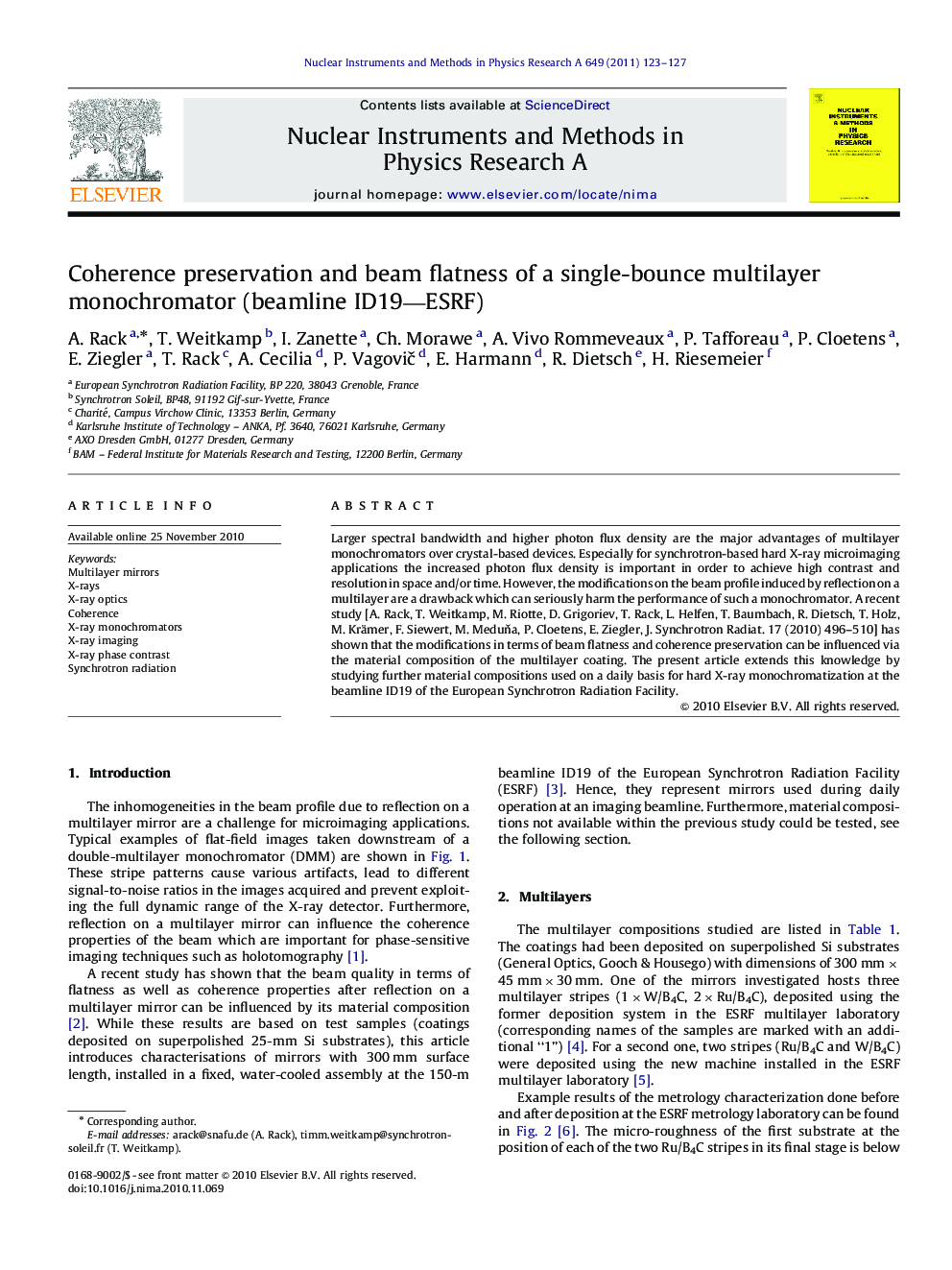| Article ID | Journal | Published Year | Pages | File Type |
|---|---|---|---|---|
| 1824913 | Nuclear Instruments and Methods in Physics Research Section A: Accelerators, Spectrometers, Detectors and Associated Equipment | 2011 | 5 Pages |
Larger spectral bandwidth and higher photon flux density are the major advantages of multilayer monochromators over crystal-based devices. Especially for synchrotron-based hard X-ray microimaging applications the increased photon flux density is important in order to achieve high contrast and resolution in space and/or time. However, the modifications on the beam profile induced by reflection on a multilayer are a drawback which can seriously harm the performance of such a monochromator. A recent study [A. Rack, T. Weitkamp, M. Riotte, D. Grigoriev, T. Rack, L. Helfen, T. Baumbach, R. Dietsch, T. Holz, M. Krämer, F. Siewert, M. Meduňa, P. Cloetens, E. Ziegler, J. Synchrotron Radiat. 17 (2010) 496–510] has shown that the modifications in terms of beam flatness and coherence preservation can be influenced via the material composition of the multilayer coating. The present article extends this knowledge by studying further material compositions used on a daily basis for hard X-ray monochromatization at the beamline ID19 of the European Synchrotron Radiation Facility.
